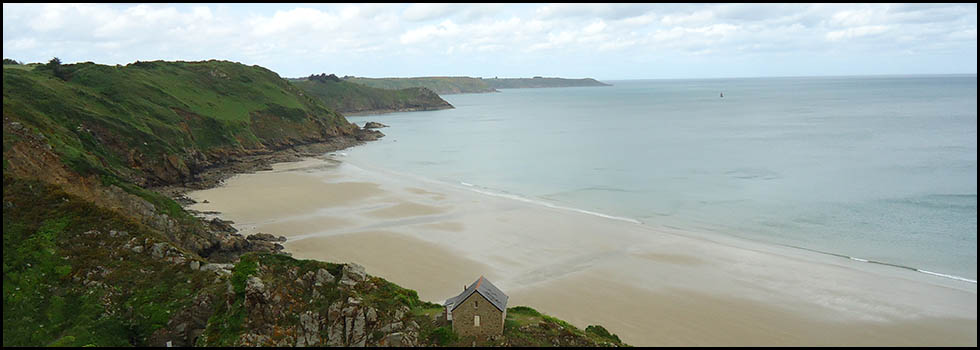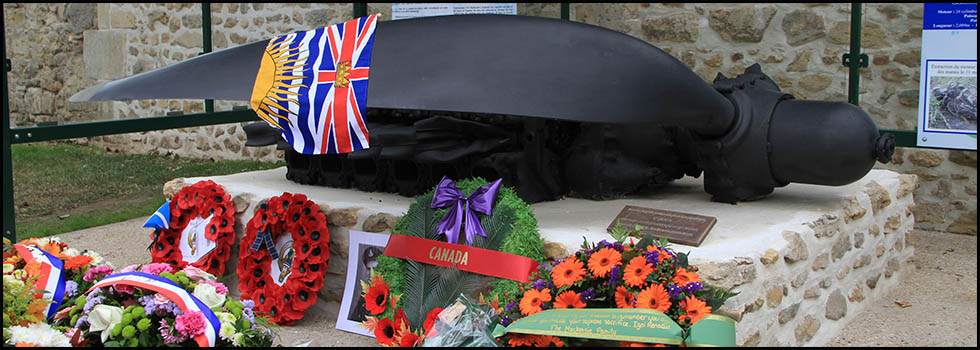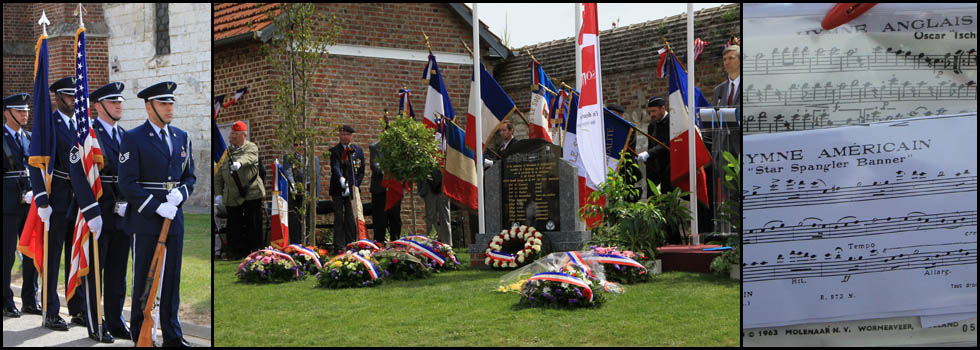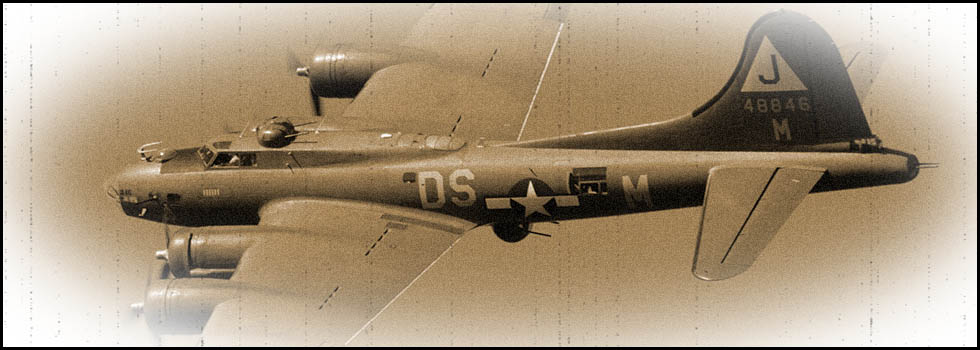2nd August 2014
Fournival (Oise)
Tribute to 2nd Lt. Gerald C. CHAPMAN
4th Fighter Group
336th Fighter Squadron
8th Air Force
Copyright © 2014 -Association des Sauveteurs d'Aviateurs Alliés - All rights reserved -
En français ![]()
It is 70 years to the day, on this Saturday 2nd August 2014, at the initiative of the A3P (Association pour la Preservation et la Promotion du Patrimoine of Fournival) which was associated with the ASAA, that a tribute was paid to 2nd Lt. Gerald C. Chapman, pilot of the P-51B "Mustang" # 43-6846, 4th Fighter Group, 336th Fighter Squadron of the 8th Air Force.
Under a hot summer sun, it was on the exact site of the crash that both History enthusiasts, Associations of veterans and the population from the nearby towns and villages gathered together. Mr. Desmedt, departmental Councillor, honoured this tribute with his presence.
This ceremony, characterized by simplicity, was led by Mr. Revelin. First of all he did not fail to recall that exactly 100 years before, France decreed the general mobilization order for a war that would ultimately last four years before recalling the circumstances of the death of the young American pilot Gerald C. Chapman.
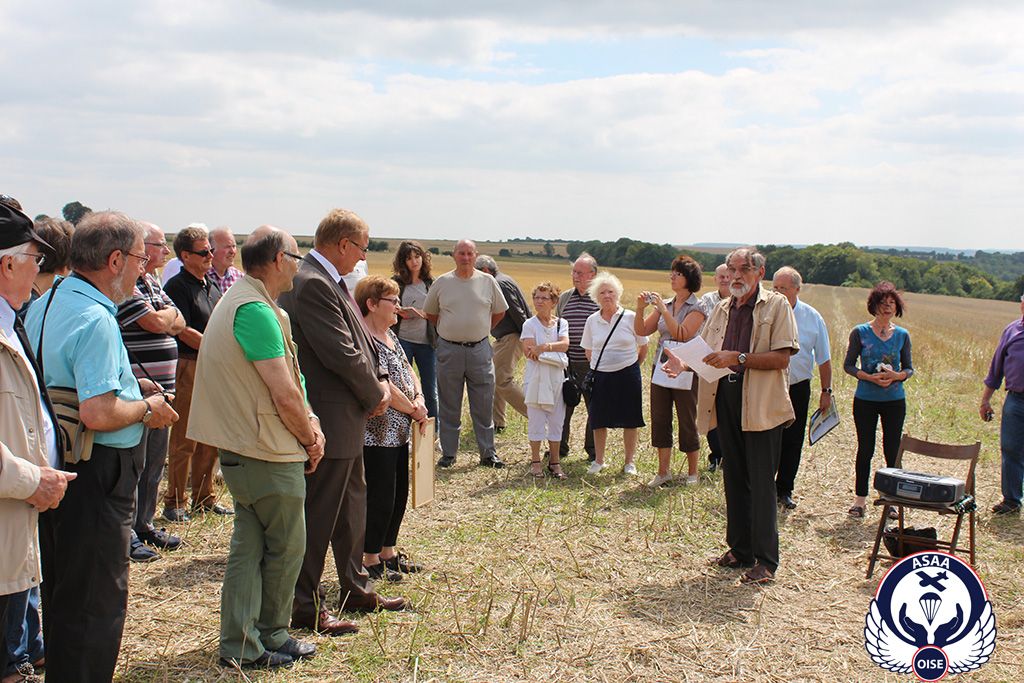
He then left the floor to Dominique Lecomte, of the ASAA, who successively read the mission report of Captain Glass but also that written by the German officers serving the Flak battery who had shot down the aircraft.
It was also stated that Captain Glass Jr was shot down in aerial combat on 18th August 1944, 16 days later. He had managed to escape death by landing his "Mustang" in a field near Lannoy-Cuillere (Oise). Rescued by the population, he waited for the Liberation which occurred a few days later and joined the Allied lines.

Mr. Desmedt also drew a parallel between the dates of 2nd August 1914, when France was entering a war that was to be “the war to end all wars" and of 2nd August 1944 which, 30 years later, saw a young American pilot being killed in action in a world that was still not pacified. He remembered how it is still important today to remember the sacrifice of all those young soldiers and Allied airmen killed on our soil, so far from their homes.

Then followed the national anthems of the United States and France and a very reverential minute of silence in memory of 2nd Lt. Chapman.
Various documents were presented including a picture of the grave of 2nd Lt. Chapman in the Epinal American Cemetery and small pieces of debris found recently at the very place of the crash.
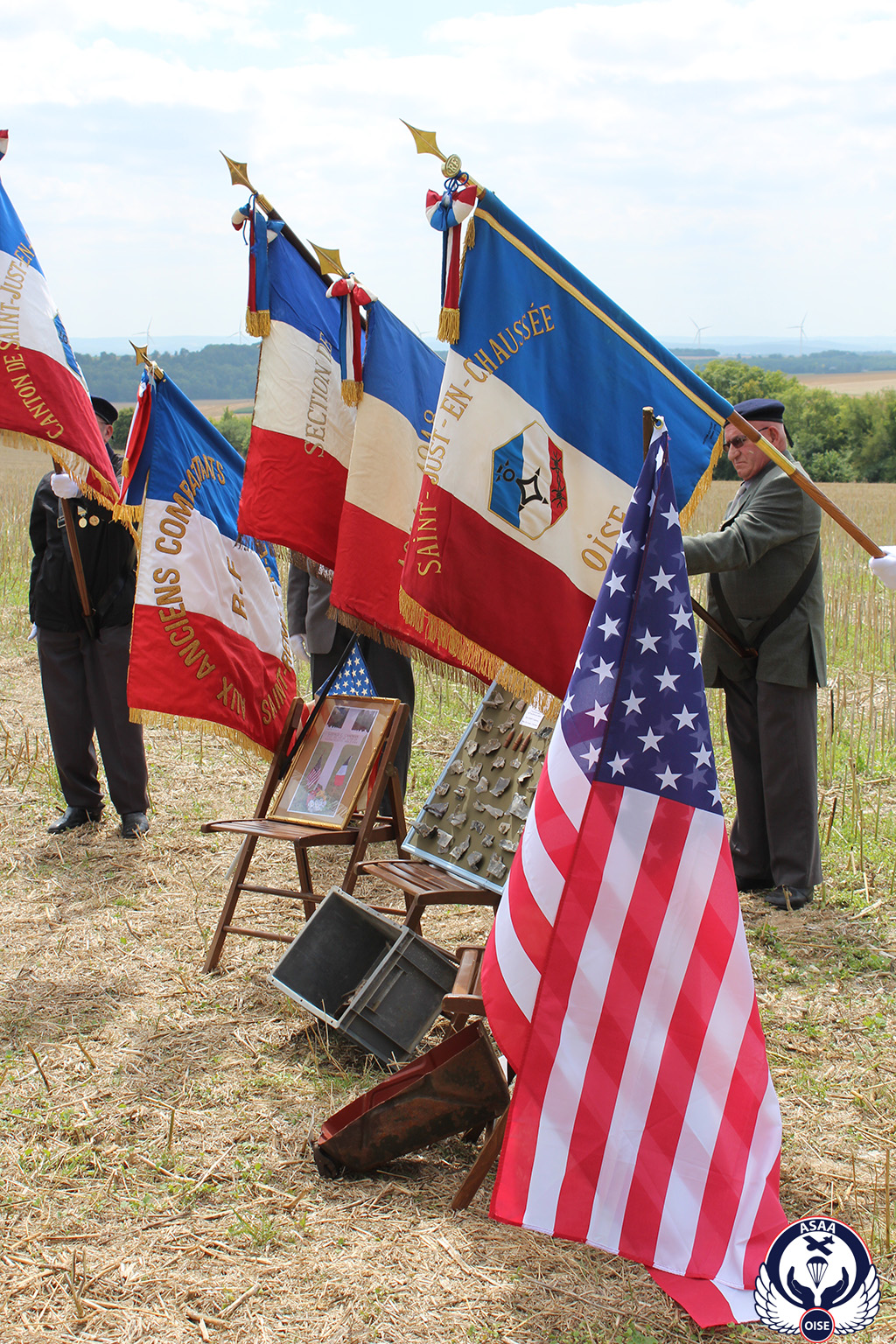
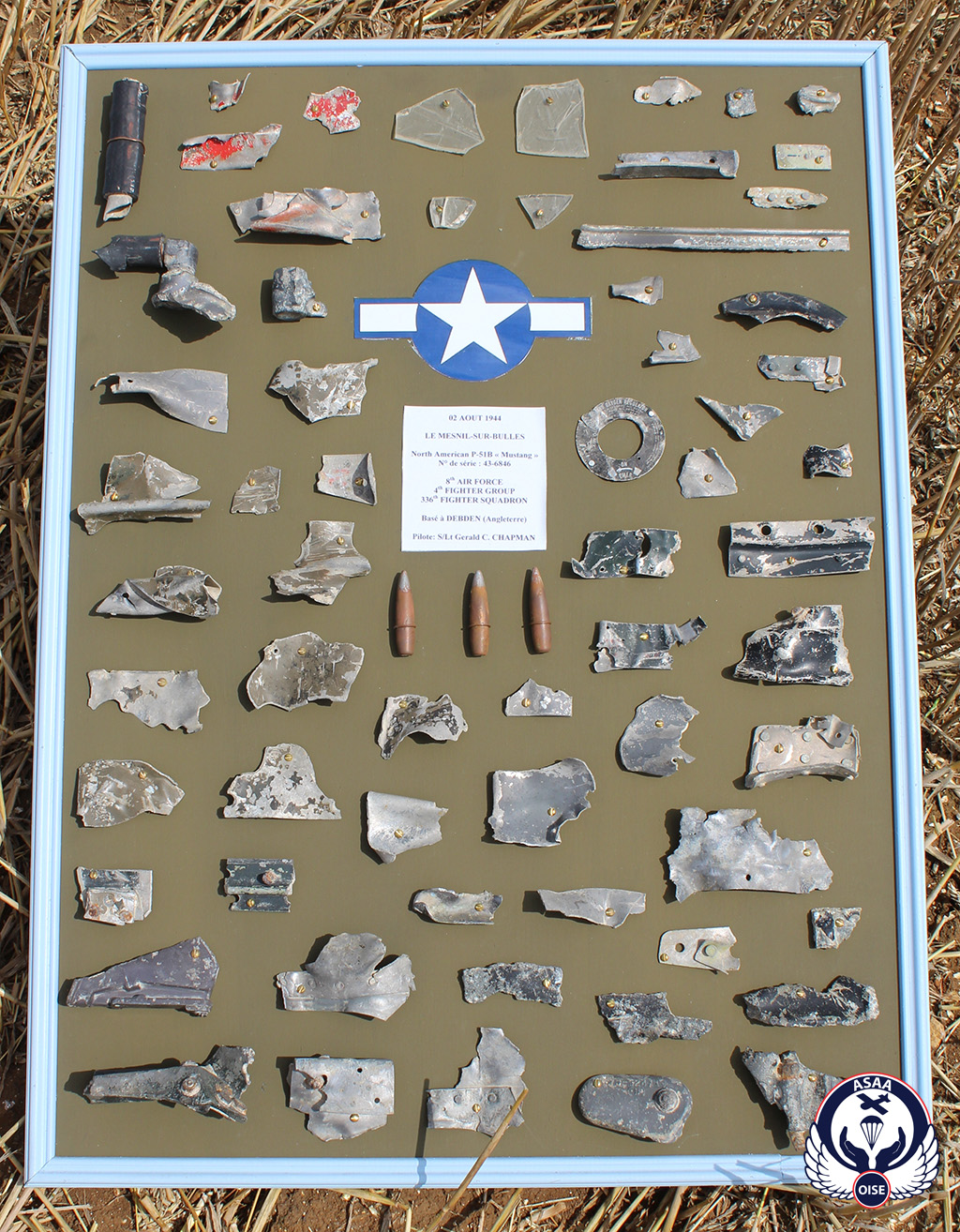
The whole assembly was then invited into the courtyard of the Fournival village hall for the traditional drink.
A philatelic souvenir limited edition, especially in memory of 2nd Lt. Chapman, was distributed to those interested.
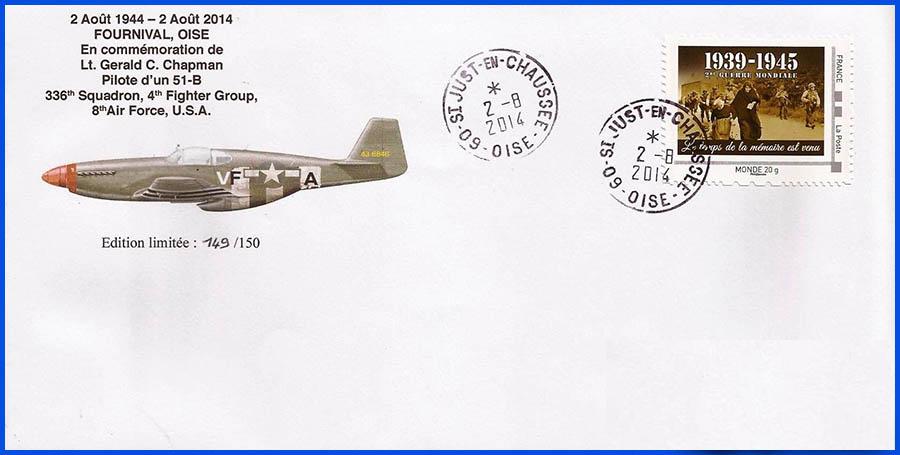
On 2 August 2019, a stele was unveiled near the crash site.
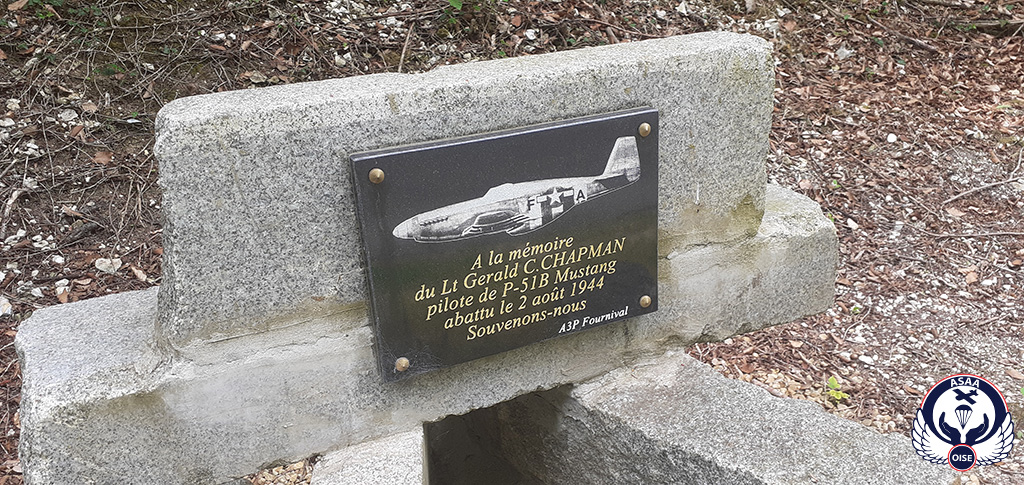
The ASAA wishes to thank Mr. Revelin and his “A3P” Association for having shared with us this moving tribute in memory of 2nd Lt. Gerald C. Chapman.

